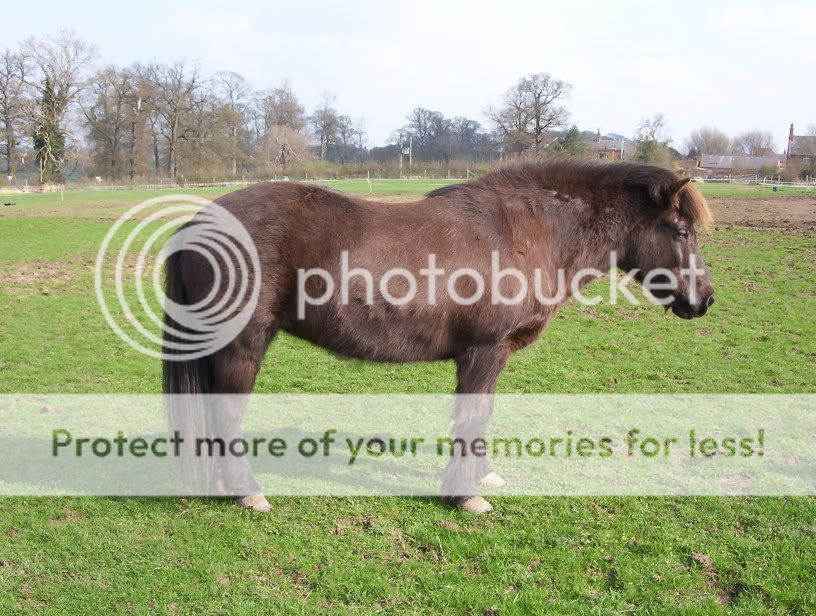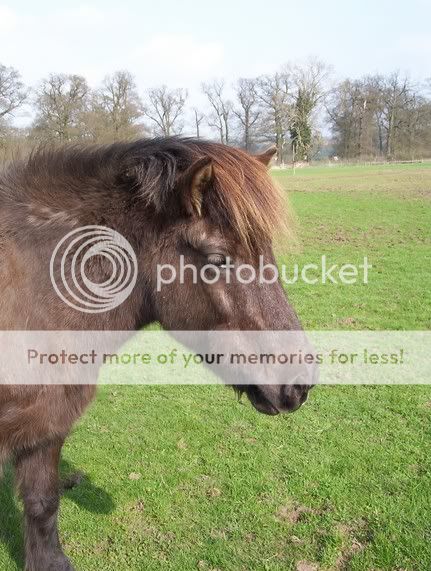'Dun' in Iberian Horses
- Thread starter helenc
- Start date
You are using an out of date browser. It may not display this or other websites correctly.
You should upgrade or use an alternative browser.
You should upgrade or use an alternative browser.
Homozygous black in PRE seem to have paler inner hair and lighter mane and tail. In my opinion this a just a normal variant of black and not indicative of any dilution gene going on...
I would have thought it would have been easy to map the Iberian dun gene as the Sorraia comes in only that colour, so surely it would be easier to fix the marker??
I will post a photo of my mare of known DNA genotype and pedigree going back generations and see what colour you think she is! She has a dorsal that goes all the way down her tail...
I am presuming your non-greying colt has at least one bay parent or is the product of two heterozygous greys? He sounds like he has countershading and sooty going on - have a look at Duncentral! Have you a photo?
I would have thought it would have been easy to map the Iberian dun gene as the Sorraia comes in only that colour, so surely it would be easier to fix the marker??
I will post a photo of my mare of known DNA genotype and pedigree going back generations and see what colour you think she is! She has a dorsal that goes all the way down her tail...
I am presuming your non-greying colt has at least one bay parent or is the product of two heterozygous greys? He sounds like he has countershading and sooty going on - have a look at Duncentral! Have you a photo?
She definately has the very cute gene!
She looks like she might be going grey from the photo, but it could just be how the light is shining. It would explain the pale inner ear. Although she appears to have blond eyelashes, but again, that could be the light.
How old is she?
My stallion has produced two foals that have looked almost black, but are definately greying. I know my stallion is homozygous bay and heterozygous grey.
I've attached some photos of the foals.
I'll dig some photos out of my yearling colt. His sire is bay and almost certainly has the sooty gene. His dam is heterozygous grey and homozygous bay. She has produced other foals with dun markings, from various stallions, but they have all greyed. My yearling tests negative for grey.
She looks like she might be going grey from the photo, but it could just be how the light is shining. It would explain the pale inner ear. Although she appears to have blond eyelashes, but again, that could be the light.
How old is she?
My stallion has produced two foals that have looked almost black, but are definately greying. I know my stallion is homozygous bay and heterozygous grey.
I've attached some photos of the foals.
I'll dig some photos out of my yearling colt. His sire is bay and almost certainly has the sooty gene. His dam is heterozygous grey and homozygous bay. She has produced other foals with dun markings, from various stallions, but they have all greyed. My yearling tests negative for grey.
Attachments
She definately has the very cute gene!
She looks like she might be going grey from the photo, but it could just be how the light is shining. It would explain the pale inner ear. Although she appears to have blond eyelashes, but again, that could be the light.
How old is she?
She is VERY cute and my best horse ever! She bosses my Iberians around...
She was 14 in that photo, unfortunately she is in winter woollies in those photos but she does have a dorsal stripe, I should take a photo of it whilst she is in summer coat.
She has darker legs and sometimes her head is darker, no leg bars though.
She is actually homozygous black, but I suspect has sooty too. I didn't have her Agouti tested, but as she is black she is Aa as her dam was bay...
I have a theory that black in Icelandics, Iberians and other primitive breeds shows this faded, countershaded legbarred colouration which still tests as black regardless of homo or heterozygosity. I think it is just a slightly different expression of black that is almost atavistic in nature.
Hi all,
I believe that the term 'isabella' is used in Spain to denote Palomino ie a chestnut with one cream dilution. I have a Spanish cremello colt whose parents were described as isabella which would be correct.
I also have a PRE foal at the moment who we are not sure about. Any suggestions about his colour? He was very red when he was born, almost chestnut in sunlight, but he has a paler tummy, multi-coloured cream, black and chestnut tail, red dorsal stripe and a pale muzzle. Whilst the other foal in the picture is going grey as he loses his baby coat, Leo is coming back the same colour apart from slightly darker lower legs!


I believe that the term 'isabella' is used in Spain to denote Palomino ie a chestnut with one cream dilution. I have a Spanish cremello colt whose parents were described as isabella which would be correct.
I also have a PRE foal at the moment who we are not sure about. Any suggestions about his colour? He was very red when he was born, almost chestnut in sunlight, but he has a paler tummy, multi-coloured cream, black and chestnut tail, red dorsal stripe and a pale muzzle. Whilst the other foal in the picture is going grey as he loses his baby coat, Leo is coming back the same colour apart from slightly darker lower legs!



He looks bay to me! What colour are his parents?
'isabella' in Spanish tends to be applied to any cream dilution (probably bar buckskin which is baya), so palomino and the double dilutes such as perlino, cremello etc and also the double pearl dilution gene.
'isabella' in Spanish tends to be applied to any cream dilution (probably bar buckskin which is baya), so palomino and the double dilutes such as perlino, cremello etc and also the double pearl dilution gene.
newrider.com






